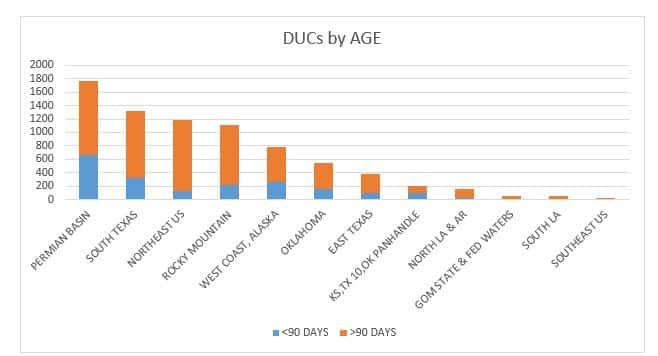Get your DUCs in a row
A key strategy operators used to weather the downturn in oil and gas prices for the last three years was to delay completion of drilled wells until the market rebalanced and prices recovered. Since the completion cost of unconventional wells accounts for 50-60% of the total well cost, the strategy paid good economic dividends. Drilled but UnCompleted (DUC) wells still number in the thousands across the US. The trick is identifying them and then further refining the list based on age. There are many challenges, so let's look at what's required when you go DUC hunting.
The greatest challenge in identifying a DUC is to eliminate wells that have been completed yet the proper Well Completion forms have yet to make it thru the various state regulatory agencies. At IHS Markit, the analog to a DUC is the "AT-TD" status. This indicates a well has reached TD and operations have been suspended. But have they? We comb through thousands of ancillary records looking for indications that a well has had some aspect of completions work performed. We look for indications of initial potential (IP) tests, perforation records, frac treatments or production tubing to name a few. When we find evidence of completions work being performed but are still waiting on the official completions paperwork, we will update the Well Status from "AT-TD" to "TREATED - PENDING COMPLETIONS". By constantly grooming the inventory of "AT-TD" wells, this helps refine the list of potential DUCs. As of mid-February 2017, there were just over 7500 "AT-TD" wells to be considered as DUCs (Figure 1).
Figure 1
However, to consider a well truly an inventory well awaiting completions, further refinement is justified given the length of time it takes an operator to file various forms. Figure 2 shows the DUCs broken out by wells “AT-TD” less than and greater than 90 days from SPUD DATE. Best practice would dictate that the newer wells be excluded from any DUC. IHS Markit recommends that wells less than 90 days from SPUD DATE not be considered. This reduces the number of potential candidates for DUCs to approximately 5600 wells across the US (Figure 3).
Figure 2
Eliminating the early wells changes the ranking by region improving prioritization.
Figure 3
Ensuring we maintain consistent standards for well status enables this type of analysis to be performed with relative ease. Utilizing our vast network of analysts to comb through tens of thousands of documents every month enabling IHS Markit to maintain currency.
Learn more about IHS Markit data quality for the energy industry.
Zane Reynolds is Senior Director of US energy information operations at IHS Markit.
Posted 11 April 2017
This article was published by S&P Global Commodity Insights and not by S&P Global Ratings, which is a separately managed division of S&P Global.




